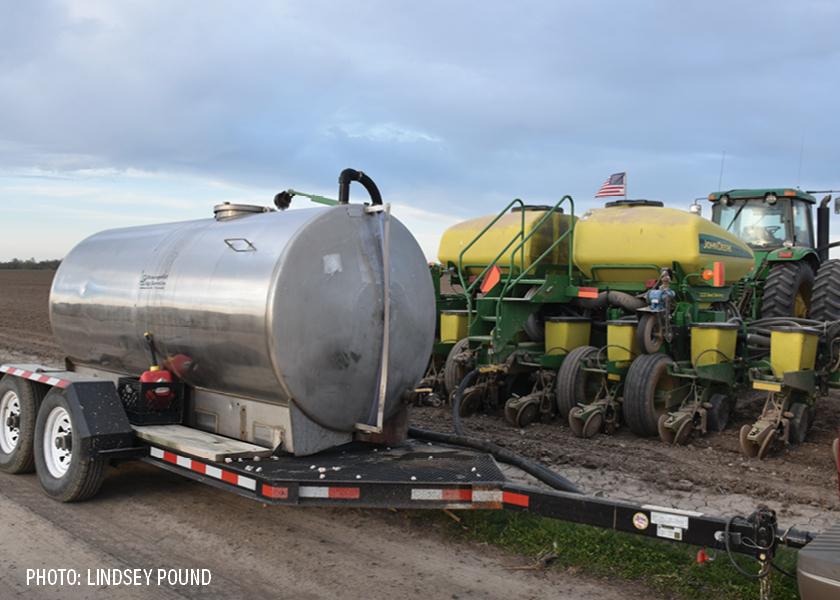5 Trends To Watch In The Input Market

As fertilizer prices go through a seasonal spring elevation, experts are watching global dynamics to understand the market’s longer-term outlook in the U.S.
Among their top concerns are geopolitics, weather and low supply.
Possibility of Pipelines in Russia
Before Russia began invading Ukraine, they were the top global exporter of anhydrous. But due to their pipeline’s proximity to Ukraine, production plummeted.
Sam Taylor, farm inputs analyst at Rabobank, says the high prices that resulted from the loss of this pipeline aren’t expected to make another appearance.
“We saw the worst of the market really come and go,” Taylor says. “When we look to affordability, farmers should be able to reasonably feel comfortable in investing in a lot of these fertilizers.”
Josh Linville, vice president of fertilizer at StoneX, adds prices have the potential to significantly drop as Russia works on two new pipelines, one of which could come online as early as this year. However, the new route is also within reach of Ukraine and could be a potential target.
“You have a situation where the world’s largest exporter could pop up and start exporting again. Or, maybe they don’t,” Linville says.
The Israel/Hamas Conflict Continues
Another conflict with potential to impact the market is the situation between Israel and Hamas –even though Israel isn’t necessarily an area heavy in fertilizer production.
“This is one misstep away from the entire Middle East region jumping into the mix,” Linville says. “Sometimes the indirect impacts can have a foothold in the marketplace.”
Linville says the Middle East accounts for 51% of global urea exports and even a small reduction in supply could cause a scare and make prices jump.
China’s Unpredictability
Higher prices could also result from China–a major exporter of nitrogen–who has placed new restrictions, Those new restrictions could mean 40% less exports from the country.
“Right now, we're going ahead with the idea that the Chinese are going to restrict exports,” Linville says. “They're going to lower that number and that's going to help keep prices a little bit more elevated.”
Taylor shares while tight supply may be in the near term, the longer outlook may be more positive.
“We anticipate the bulk of the exports from the Chinese market are likely to come in the second half of this year, which ultimately means a semblance of tightness in the North American market and also the global markets for the first half,” Taylor says. “There is room for optimism in the second half of this year as we look forward into 2025 to potentially see some downward pricing dynamics.”
With this in mind, Linville says it’s nearly impossible to predict what China will do, and there’s a chance the restrictions could be lifted at any time.
“The government continues to step in, play a bigger role and have a heavier hand on what happens and what doesn't happen,” he says. “We're watching very closely. Are they going to further restrict exports? Are they going to loosen up a little bit? We don't know.”
The Weather Forecast
Domestically, water levels continue to be top of mind.
“The Mississippi River is an artery for our transit. When it suffers, we suffer,” Linville explains. “This is the most liquid point of fertilizer trade in the North American marketplace.
Linville says that while the Mississippi is in good shape for now, the Northern Plains have the potential to slow down the water flow due to the below-average level of snowfall they’ve received this year.
High Levels of Fall Fertilizer Applications
U.S. fertilizer applications from fall 2023 are also expected have a lasting effect on spring supply, and according to Linville, the short turnaround time between fall and spring fertilizer applications makes it difficult to restock an adequate amount of inventory.
“When we look at anhydrous, it was the third best application we’ve seen since 2000. Inventories have been drawn down very low,” he says. “You get about 90 days for the system to rebuild. There is not enough pipeline capacity, rail capacity, truck capacity or barge capacity to get the system rebuilt.”
Until inventory is rebuilt, elevated spring prices for anhydrous, phosphate and potash can be expected.
“High prices are the manufacturer’s way of saying ‘I can’t meet demand, and I am trying to shock you and scare you into using urea, UAN or something else because I can’t balance yesterday,’” Linville says.
Taylor adds while tightness in the input market isn’t quick to correct itself, next year could bring better availability.
“The current market environment still incentivizes imports into the North American market,” he says. “There should be room for inventory to build up into 2025.”







